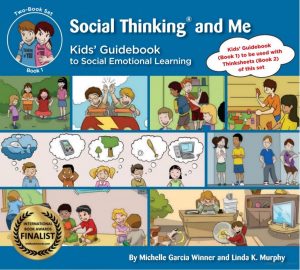During our discussions about perspective and problem-solving, we have focused on the meaning of discrimination. To better understand how discrimination has happened in Canadian history, we will look closely at the Komagata Maru incident, the Chinese Head Tax, Residential Schools, and Japanese Internment.
We began watching In the Shadow of Gold Mountain in class, which is about the Chinese Head Tax. You can watch the rest of the video at the National Film Board site, here.
We watched this video about the Truth and Reconciliation Commission, narrated by Chief Robert Joseph and sharing his own experiences with Residential Schools.
We watched the David Suzuki narrated short film on Japanese Canadian Internment.
And finally, we watched a short film about the Komagata Maru Incident in Canada.
Here are some of the ways you can help with Reconciliation, with this list from CBC, posted as part of National Indigenous History Month in June 2020. There are many examples of personal acts you can take to help, such as educating oneself about Indigenous issues through books and videos.
Here is the Government of Canada website on What is Reconciliation?
We will be going on a field trip to the Museum of Vancouver January 17th to participate in the program “Stories of Resilience and the Road to Reconciliation.” During this we will learn more about the Musqueam Peoples and the reconciliation efforts the museum is participating in as regards Musqueam belongings and history. During our self-guided tour, we can also view the exhibit A Seat at the Table about Chinese Immigration, which is related to our unit.
I will continue to add to this post as I find more resources.
In relating to our overall unit on PROBLEM SOLVING, do some independent research one of the four historical events we discussed in class (which has been assigned as of Friday Jan. 6th) to answer these questions:
- What is the incident?
- What happened? Tell me the history and events involved.
- Why did it happen?
- Who was involved?
- What kind of discrimination happened?
- What has Canada done to try and make it right? Has there been an apology? Reparations? Reconciliation?
- Is there an interesting story you can learn that happened during this incident?
- Any other facts you believe are important for people to know?
Take detailed notes in your journal under each of these questions. Try to see if you can use at least 5 different resources. There are some books in class you can use in the green bins on top of our bookcases.
Make sure to record your resources where you found information. Take care to use the T-Chart to take notes, and make sure they are neat so I can see your research. You can use a MS Word document to take notes, if you wish, but you still need to have a chart. Please avoid cutting and pasting, and use your own words to take notes.
Research will be due Friday, January 13th, and you can show it to the teacher in class by Friday afternoon. Then we will discuss when Ms. D gets back what we will do to share our research. We will be working in groups to share our findings in a skit format.
HERE ARE SOME LINKS YOU CAN USE TO HELP:
Websites about KOMAGATA MARU
Komagata Maru Grade 4 Video
You Tube Remembering Komagata Maru
History of Metropolitan Vancouver Komagata Maru
CBC Komagata Maru 100 Years Later
CBC Komagata Maru: Justin Trudeau to Apologize
CBC Komagata Maru: Descendants Surprised By Stories
CBC Komagata Maru Memorial Defaced in Vancouver
Canadian Encyclopedia on Komagata Maru
Komagata Maru Continuing the Journey
OHRC Komagata Maru as a Violation of Human Rights
Websites about JAPANESE INTERNMENT
CBC Learning A Canada’s History Japanese Internment
Virtual Museum Aya’s Story
Japanese Canadian History. NET
Canadian Encyclopedia Beyond the Tears: Japanese Internment
SEDAI Japanese Canadian Legacy Project
Pictures of Japanese Internment Sites in BC from book Vanishing British Columbia
Websites about CHINESE HEAD TAX
Ties that Bind Website on Chinese Canadians
Canadian Encyclopedia on Chinese Head Tax
CBC Chinese Head Tax Reparations Called For
Globe and Mail PM Offers Apology and Symbolic Payments for Chinese Head Tax
TC2 Background History on Chinese Head Tax
and Response to Head Tax
Historica Canada Building of the CPR
CBC Archives The Personal Impact of Racism
CBC Digital Archives Chinese Immigration Not Welcome Anymore
Websites About Residential Schools:
UBC Residential School History
Canadian Geographic History of Residential Schools
Learning Portal Royal BC Museum Residential Schools
CBC History of Residential Schools in Canada

